The Making of a White Liberal
HAVE YOU EVER wondered why there aren’t more White Nationalists?
There have been dozens of failed experiments in racial ‘equality.’ From the period of decolonialization to the fall of White South Africa we have seen these policies fail again and again. [1] In the United States we have engaged in over fifty years of racial egalitarianism with disastrous results. Our once proud industrial cities are turned into ruins and White Americans are subject to brutal crimes day after day. [2] [3] [4] [5] (ILLUSTRATION: Jean Seberg)
The reasons for our decline are well documented – the ascendancy of Jewish influence, the piece-meal sale of our nations by international corporations, and the mass migration of non-Whites into our lands. [6] What remains less clear is why fewer White people have become explicity pro-White in their politics.
On January 20, 2009 the first black President of the United States was sworn into office. The man stumbled over the words of his inauguration oath and grinned. [7] President Obama had been voted into office by 43% of the White electorate. [8]
If we have any hope of creating a successful race-based political movement, we need to understand the 43% of Whites that elected President Obama. Why do they often deny the reality of race? Why can’t they see the failure of racial integration and multiculturalism?
There are many ways to analyze this phenomenon. Rather than examining voter turnout, media influence, and other general areas, let us instead examine the life of a specific White liberal. The case study of an individual will provide both character traits and environmental influences that may help us determine possible origins of the ‘White liberal mentality’.
The obvious candidates for our study will be politicians, celebrities, and writers. Not only are their personal lives more accessible to the researcher, but the vast majority are politically liberal. So now we have another question. Why do wealthy, famous, and prominent individuals lean heavily to the left?
The Jewish stranglehold in media and academia is the big reason. [9] [10] Anyone who takes a pro-White political position would be confronted with academic dismissal, media blackout, and threats of physical violence. White advocates such as Kevin MacDonald and Jared Taylor are frequently targets of such methods. [11] [12]
Yet, this only explains the passive acceptance of the liberal orthodoxy. This does not explain why so many intelligent and prominent individuals are not only accepting of ‘cultural marxism’ but also its advocates. At ‘elite’ universities a full 87% of faculty self-identify as liberal. [13] Robert Jensen, journalism professor at the University of Texas, has gone so far to say, “I want to live in a world where I can at least imagine that someday I will be able to stop being white.” [14]
But again, we need to know why these people have such views. So we return to our strategy of studying the life of an individual. But which individual to study? The individual should meet several criteria. The first is a ‘healthy’ childhood. Anyone with a traumatic or abnormal childhood should be excluded from our study. A second criteria should be outspoken support for liberal and left-wing causes, especially of a non-White type.
After a short search I found someone who met these requirements. The subject of our inquiry was born in Marshalltown, Iowa on November 13, 1938. She was raised in a Lutheran household, was fond of animals, and was voted “Most Likely to Succeed” in high school. On September 8, 1979 her body was found decomposing in the back seat of her car, parked in a Paris suburb. After a life of left-wing political activism, a string of failed marriages, and mental instability, Jean Seberg was dead.
Jean Seberg was born on November 13, 1938 in Marshalltown, Iowa. Her family was the descendant of Swedish immigrants whose original name was Carlson. The name was changed to Seberg because “there were already too many Carlsons in the New World.” [15] One of Jean’s childhood friends remembered the Sebergs fondly. “I always had nice feelings about the Sebergs. Of all my friends’ families, Jean’s was the happy one. Ed Seberg was the traditional father figure, solid and dependable. Dorothy was usually bustling about the kitchen, baking bread and cookies.” [16] This was an ideal existence in a now vanished White America. It was different and isolated from most of the world.
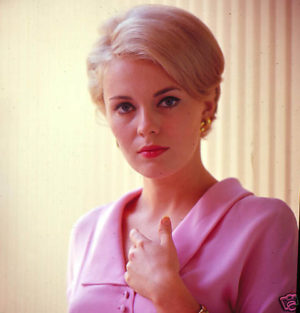
The Seberg household was devoutly Lutheran, “attending church every Sunday, without fail; at home, grace preceded each meal.” [17] The children were often sent to Bible study camps during the summer. After being confirmed in the Lutheran church, Jean became a Sunday school teacher in 1952. [18] [19] Jean would spend the rest of her life doing good deeds and attempting to redeem herself in the eyes of those around her. Perhaps this was the natural conclusion of a small child being taught she was a born-sinner who could only be saved by divine intervention. In her adult life she had less correspondence with Lutheran church leaders and more with the local Rabbi, Sol Serber.
Jean spent her childhood often adopting small animals, helping the elderly, and even tutoring a fellow student who struggled with school. Childhood friend Lynda Haupert later said, “She always had something she was working toward not only to better herself, but society.” But Jean did not limit her kindness to family and friends. Her sister Mary Ann recalled that on a bus trip to her Uncle’s farm, Jean took pity on a man and gave him ten dollars – the only money she had. [20]
This often naive altruism was typical for a small Midwestern town. Jean’s father, Ed, was the town pharmacist. It was not uncommon for him to work after-hours to help a customer. Once he opened the store late at night to get medicine for a woman’s sick baby. Another time he personally took a prescription to an elderly man who had planned to walk to the pharmacy in the rain. [21] Although Jean Seberg would later become a well-traveled celebrity, this small-town altruism would form a key part of her character.
The effect of popular culture also had a personal effect on Jean. She recalled reading a book when she was eight in which a black woman and her daughter were given strange looks while riding a bus. Jean later said, “I understood that racial prejudices existed … I saw how far [blacks] were excluded, isolated from the others. I understood the problems of human relations which they had to confront every day and the objects of contempt they had become.” [22]
Jean’s experience with the local black population was limited, as they tended to live in a separate part of town and their behavior in public was restrained by an unstated code of racial conduct that was common to White America. Jean later told Cosmopolitan writer Joan Barthel, “There was a black athlete at our high school who fascinated me. There would always be after game parties at which he’d dance with the white girls. He could hold them as aggressively close as he wanted to, which he sometimes did with a vengeance. But when the dance was over, the iron curtain fell and that was it. One night he asked to walk a white girl home and he [was] beaten up.” [23]
Although racial mixing was unofficially disallowed, the White townsfolk had no hatred of the black citizens. “One winter an abandoned black infant was found frozen in a snow drift. When doctors brought the baby back to life, the miraculous news merited headlines in the Times-Republican.” [24]
At the age of fourteen she mailed an application for membership in the Des Moines chapter of the NAACP. Her father cautioned her by saying, “[people] will think you’re a Communist.” Jean replied that she didn’t care what people say. [25] The NAACP, for those unaware, was a Jewish-led organization that received high praise from the American Communist Party. [26]
Jean would later say of the incident, “I can think of a thousand reasons for my joining the NAACP that make me sound terrific, but the only valid reason I can think of is a kind of alienation. I was raised in a rather strict atmosphere, and I thought that other people who were alienated in other ways must feel much more deeply.” [27]
This sense of alienation would be explained in more detail to reporter Helen Eustis in a piece for McCall’s. “I’ve never felt as if I belonged here. I know my parents love me – I don’t mean it that way and I know this is silly – but I always felt as if I didn’t fit in. I’d look at all the people in this town who just get up in the morning and go to work and go home to bed and I’d think, if that’s all there is to life, I don’t want it.” [28]
In high school Jean showed both her passion and also talent for acting. She was featured in numerous school plays and productions. Jean became good friends with Marshalltown teacher and theater actress Carol Hollingsworth. Jean was impressed by James Dean’s performance in Rebel Without A Cause and dragged her teacher to the theater with her. When James Dean died she sent a letter of condolence to his aunt and $5 for flowers to be put on his grave. She received a note of thanks for her act of kindness. [29]
Immediately following her graduation from high school she was recommended by teacher Carol Hollingsworth and Bill Fisher, a wealthy local philanthropist, to audition for the role of Joan of Arc in the film Saint Joan. After several auditions in front of director Otto Preminger, Jean was chosen for the role. On her eighteenth birthday, Jean Seberg would be flying from small-town Iowa to New York, and then to London, the location of filming. [30]
Already in the early years of her life there were certain personality traits that are apparent. Jean was altruistic in her actions, alienated from her identity, and isolated from reality beyond small-town America. These factors would play a huge role in shaping her life.
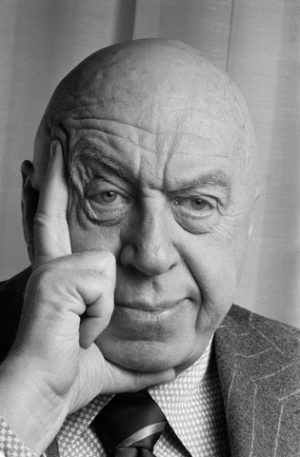
If Jean found her Lutheran upbringing strict and puritanical, she would absolutely hate life under director Otto Preminger. Preminger was born in Austria to a Jewish family. [31] Although he was not the only major influence in Jean’s life, he was perhaps one of the worst.
Like many people, Preminger would use Jean for his own selfish reasons. Marlon Brando would later say he “wouldn’t work for that bastard, not even for ten million dollars.” [32] Preminger kept a tight control of Jean’s daily schedule during the filming of Saint Joan, even disallowing her to return home for the holidays. Her schedule was so rigid that it excluded her from most social activity. Jean expressed her sense of alienation, “The shock was greatest because I had divorced myself from life in Iowa. My girlfriends had married and led lives that I no longer had any touch with, and I hadn’t developed a circle of friends in the new life I was projected into at seventeen…” [33]
Preminger also verbally and emotionally abused the young Jean, taunting her on the film set. “What’s the matter? Can’t you do this scene?” Preminger later said, “You’re a short thing. What makes you think you can act?” [34] Maggie McNamara and Dorothy Dandridge, two other actresses who worked with Preminger, were also victim of his abuse. They would both commit suicide. [35]
Preminger allowed the press onto the set during the filming of the scene where Jean would be burned at the stake. A mechanical error resulted in an accidental fire that left Jean with lifelong scars. Preminger was accused of staging the incident as a publicity stunt. Within twenty-four hours Jean and Preminger were in a car accident. Preminger released photographs after the incident showing him holding Jean’s bandaged hand and smiling. If he hadn’t deliberately staged these incidents for publicity, he was certainly taking advantage of them. [36]
Saint Joan was a failure but Preminger casted Jean again in the film Bonjour Tristesse. Jean met François Moreuil during filming and immediately fell in love with the young French lawyer. After filming was complete, Preminger made no indication of whether he would use Jean in any more films, and she and François moved to New York where Jean could take acting lessons. [37] François gave up his law practice, sold his car, and worked in a darkroom for ten hours a day developing photos. “We were really short of money.” said François. [38]
Jean and François returned to Marshalltown and were married on September 5, 1958. [39] At the ceremony François sobbed loudly and kissed his bride on both cheeks. During this marriage François came to realize the extent of Jean’s personal issues. “She was either unhappy because she was making a movie, or unhappy because she wasn’t making one.” he said. [40]
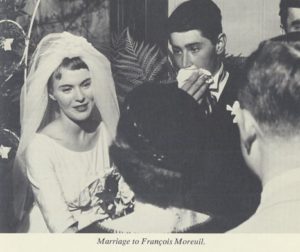
In 1959 François and Jean were in Los Angeles. They were invited to dine with the French Consul-General, Romain Gary. The ambassador was really not French at all but rather the son of Jewish parents from Lithuania, his original name being “Kacew.” After moving to France with his mother at the age of 14, he studied law and was granted French citizenship in 1935. In 1938 he joined the French air force and was part of the Free French forces that operated from England. After the war he became an ambassador and writer. He was also a married man. [41]
Gary, who was nearly as old as her father, began quickly pursuing the newly-wed Jean. By early 1960 Jean and François had already begun to grow apart. [42] At this stage Jean’s personality seemed to split into two directions. On one hand, she remained the kind, naive, and altruistic Midwesterner. On the other hand, she was willing to abandon her new husband for a much older man.
During this time period Jean also suffered what may have been her first mental breakdown. While driving her to a clinic, François recalls that “With her high heels, she broke all the instruments on the dashboard.” Jean was then placed under psychiatric care. An agreement was reached with Gary that, for Jean’s personal health, no one should see her. Later François learned that Gary had in fact visited Jean while disguised as a doctor. François also believed that Gary “had put Jean under the care of one of his friends who was a psychiatrist to ‘take hold of her.'” [43]
Jean called him a liar and later returned to Marshalltown to file for a divorce, listing reasons such as irreconcilable differences and cruelty. She also claimed that François, the young Frenchman who wept at his own wedding, was physically abusive. François responded by saying, “My only cruelty consisted of giving up my profession to help further my wife’s career.” Regarding the physical abuse he would only say that “I never hit Jean. Never. I never touched a woman.” [44]
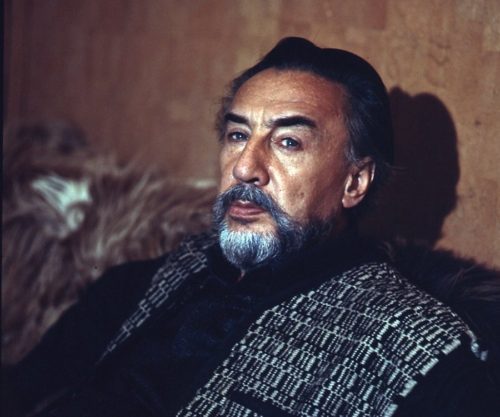
On July 17, 1962 Jean gave birth to Diego, her son by Romain. Because Romain was still married to his first wife, Lesley Blanch, he used his connections to have the date of birth changed to October 23, 1963. Jean and Romain would not be able to marry until October 10, 1963. The child was kept secret from Jean’s family until nearly two years later, and his real birthdate was not admitted. It was during Jean’s marriage to Romain Gary that she became involved in leftist causes, especially Black Nationalism. [45]
By the early 1960s Jean was living with Romain Gary in France. He had given up his diplomatic position due to the scandal involving his love affair with Jean and turned to writing novels. [46] Diego, their secret child, would be raised by a nanny in Spain for most of his early life. [47]
Although Jean’s new life in France would lead to greater film success than she had in America, she nonetheless felt as out of place in France as she did in Marshalltown. “It annoys me when a Frenchman comes up and says, “oh, you’re so unexpectedly Parisian’ He means to compliment me, but I can’t help snapping: ‘I’m an American – Iowa American.’ I can’t imagine pretending to myself that I am anything but American.’ [48]
Jean would maintain contact with her family in Iowa despite living in France. On her trips back to the United States in the mid-sixties she was exposed to the growing counter-culture. “[Things] are beginning to happen here. Bob Dylan – a real poet – is somewhat the symbol of the rising generation looking for new values,” Jean said. “As for the Vietnamese war, one finds it’s acceptable for young men who want to avoid [the draft], some of them from highly patriotic families of the Midwest. The beatniks have almost become respectable. Ginsberg is giving lectures at American universities. It’s undeniable: America is waking up.” Two years later she said, “If I had lived in South America I would have fought with Che.” [49]
In 1968 Jean was in Washington D.C. for the filming of Pendulum. On April 4, 1968 Martin Luther King Jr. was assassinated. The blacks immediately rioted in the capitol and around the nation. “Filming there was dangerous in a way,” the director recalled. “We had a lot of extras dressed in police uniforms for a scene. We had to call off the shooting because when those extras were walking back to wardrobe, they were attacked by black youths.” Jean would lay the blame on Whites in a letter to her friend Vony Becker, “The indifference of the White population is almost total. Instead of improving conditions in the ghetto, they are buying arms to defend themselves. You get the impression of being in a profoundly sick country which doesn’t believe in its illness.” [50]
In October of 1968, Jean met Hakim Jamal on a plane trip to Los Angeles. He was born in Boston’s black ghetto in 1931 with the name Allen Donaldson. “Jamal” was a former criminal, alcoholic, and heroin addict. He had cleaned up his image and started a family, and he also now sported a beard and African ‘kofia’ hat. He was involved with the Black Muslim movement and held Malcolm X in high esteem. [51]
Hakim Jamal would eventually become one of Jean’s lovers and political contacts. Frequently he would ask for money. It was also through him that Jean would become involved with the Black Panther Party. Although Jean later claimed that she took two black nationalists as lovers, their real attachment was to her money. [52]
A mere cursory glance reveals the extent of her contributions to the Black Nationalist movement. She made a financial donation to the Black Panther’s free breakfast program in 1968. [53] Later she began giving money to the party in incremental amounts of several thousand dollars at a time. [54] Jean even paid for Hakim Jamal’s overdue membership fees in the Typographical Union in Los Angeles. She paid the fees by personal check, amounting to over $200. [55] In another instance she gave the Jamal family a personal check for $5,000. By 1969 the FBI estimated that Jean had contributed at least $10,500 to the Black Panther Party. [56] This is likely much less than the true amount of her contributions. Jean often gave cash and did not openly admit to giving money for fear of losing her career prospects. [57]
But the recipients of Jean’s generosity gave her little but ingratitude. Hakim Jamal’s wife Dorothy said that, “Jean was always renting cars for the Panthers, who generally tore them up.” In one instance Jean received a phone call from Hakim and she was reduced to tears. Her friend, actress Maureen Stapleton, took the phone and interrupted Jamal, “You’re a sonofabitch. Jean is working her ass off for you people, and you don’t appreciate it.” [58]
In January of 1970 Jean was filming Macho Callahan in Mexico. It was there that she had a affair with Carlos Navarra, a radical activist. She soon realized she was pregnant, and although she was still married to Romain Gary, they had been separated for some time. When she returned to France after fiming she began to reconcile with Gary and he would claim the unborn child as his own. [59]
However, due to Jean’s connection with the Black Panthers and other radical Black Nationalist groups, the FBI had begun to monitor her activities. They recorded a phone conversation she had with several Panthers that seemed to indicate, falsely, that one of them was the father of her unborn child. The FBI then decided to leak this information to the press in hopes of turning public opinion against Jean Seberg. [60]
On August 19, 1970 Newsweek published the rumor and a day later the delivery of Jean’s second child, Nina, had begun. The delivery was premature and the child died in the hospital. After the delivery several of her Black Panther “friends” came to her bedside and tried to take her credit cards and money. [61] Romain Gary would later claim the Newsweek article was directly responsible for the death of the child, and would make this part of his libel suit. Jean’s increasingly wild lifestyle and her overdose of sleeping pills on August 7 may have had more to do with it. [62]
The funeral for baby Nina was held in Marshalltown. Jean confided in Rabbi Sol Serber during her return. “She was unhappy and disturbed. She felt that she had let her parents down. She knew all the gossip going around, and she was afraid it would hurt them,” he said. [63] While in Marshalltown Jean also purchased a two-story, five-bedroom house in town to house black athletes attending the local community college. The people of Marshalltown initially showed enthusiasm for the idea, donating sheets, beds, and furniture, but there were soon complaints of loud music and parties. [64] Many years later Jean was having financial difficulties and could no longer afford to keep the house. She would entrust Rabbi Serber with its sale. [65]
Jean would eventually have less and less to do with the Black Nationalist movement, especially after the death of Hakim Jamal in 1973. One of Hakim Jamal’s White lovers was Gale Ann Benson, the daughter of a British politician. She came to absolutely worship Jamal and changed her own name to ‘Hale Kimga’, an anagram of Hakim and Gale. They traveled to the Black Nationalist commune in Trinidad, organized by Michael X, a Black Nationalist from Great Britain. While Jamal was away, Michael X and several others stabbed her and buried her in a pit. The reasons for her murder are not as clear as the death of Hakim Jamal, who was claimed by some to have been killed for taking a White ‘wife’. [66] [67]
In 1972 Jean Seberg met Dennis Berry, the son of director John Berry. Director John Berry was the son of Jewish immigrants to America, and his birth name was Jak Szold. He would later flee the United States due to his identification as a Communist during the McCarthy investigations and settled in France. His son Dennis spoke “fractured English with a Brooklyn accent.” Less than three weeks after they met, Jean and Dennis flew to Las Vegas and married. Dennis was seven years younger than Jean and was practically broke. Few approved of the marriage. [68] [69] [70]
Dennis made a poor impression on the Seberg family when he and Jean visited Marshalltown for Christmas. “He was very outspoken,” Velma Odegaard said. “He took my brother’s car and wanted to drive around town. He came back and was so unhappy – sort of grumbling. He said ‘I have found out there are absolutely no poor people in this town! No poor people!’ [71]
By 1977 their marriage was becoming unbearable. They began to argue frequently and this resulted in physical fights. [72] A co-star in one of Jean’s films said “He loved her money more than he loved her.” Even his father made a habit of making expensive long-distance telephone calls whenever he was at Jean’s apartment. Dennis began arguing that Jean should move with him to the United States, and in 1977 she finally threw him out. [73] They never officially divorced, and Jean remained married to Dennis until her death a few years later.
It was during her marriage to Dennis and their subsequent separation that Jean’s mental problems began to develop into a serious handicap. She was taken into multiple clinics, sometimes those which kept the insane homeless who had nowhere else to go. She had also begun consuming near-lethal quantities of liquor. [74]
Jean met Ahmed Hasni, a nineteen year-old Algerian, in 1979. Hasni attempted to get her away from alcohol and cigarettes, and had helped her prepare for a film role. But his influence was also domineering and abusive. Hasni took control of what little money Jean had left and began beating her. [75] He would be the last person who saw Jean alive.
The official story of her death is that she left her apartment early on August 30, 1979 wearing nothing but a sheet, parked her car, then climbed in the back seat and swallowed a lethal overdose of pills. Her autopsy revealed that she had enough alcohol in her body to induce a coma in even the hardest of drinkers. Strangely, there were no liquor bottles in her car. Also, Jean had left her eyeglasses in her apartment, and her friends stated that she could not have driven without them. [76] Nonetheless, the death was officially ruled a suicide, and Jean was buried in France.
Jean’s second husband Romain strongly discouraged Jean’s parents from attending her funeral. The family accepted his demands rather than cause a scene by appearing. Jean and Romain’s son Diego never forgave his grandparents and he would refuse to communicate with them for years at a time. Many years later Diego admitted, “My father had influenced me against them. I broke off with them because they didn’t come to the funeral.” Diego never knew, nor did he think to ask, why they never came. [77]
There are four factors that push Whites against their racial interests.
1. Altruism
This is the biggest internal factor. Most White Europeans and their descendants have a high degree of natural altruism. The Scandinavian nations are noted for their liberal policies and welfare-states. These nations have more equal distribution of wealth than most “Communist” regimes. [78] [79] In a multicultural setting, Whites are easy targets for scam-artists and criminals because they fall victim to their own psychological projection. [80] Whites assume that different races have, at heart, the same basic mental attitudes and desires. This is psychological projection at its worst.
White altruism is a positive genetic trait and, as Ian Jobling stated, increases our ‘social capital.’ [81] The only problem is that non-Whites do not typically share this trait and tend to break down White societies from the inside. In an all-White society there would be no problem with altruism. In matters of foreign policy and war, our nations have proven themselves quite capable of defending themselves from external threats – it is only when these threats become internalized that our societies fall apart. The only solution for this is the removal of non-Whites from White nations.
2. Alienation
The second factor is alienation from a White identity. In some cases this is perhaps an innate development among people with high insecurities. In many cases I suspect that it is the result of cradle-to-grave anti-White propaganda in the media and education system. Mainstream culture portrays racial solidarity among whites as abnormal and backward, while non-Whites are encouraged to stick together for their own interests. Can anyone imagine a White counterpart to Black Entertainment Television? What about a White counterpart to Ebony magazine? Maybe a White version of Miss Black America? The inability for Whites to identify with their own race and “fit in” leads to their adoption of radical causes that undermine their own ethnic group. Even organizations that are overwhelmingly White, such as the Republican party and other ‘conservative’ groups, are disallowed from having a pro-White identity.
Our problem of alienated White identity can only be fixed by promoting pro-White organizations. These do not have to be political in nature, but could also be cultural or economic. Simply put, we need an outlet for Whites with a political or creative drive. This is a tricky area because most Western governments have anti-discrimination laws that undermine the freedom of association between Whites. The British National Party has recently found out that White Britons are no longer allowed to organize for their own interests. [82]
3. Social Isolation
Many upper class whites are isolated from reality. Most White liberals seem to have grown up in all-White upper-income neighborhoods. Writers, politicians, and celebrities tend to not be around the non-Whites they so often support. Furthermore, upper-class Whites with high IQs tend to socialize overwhelmingly with other high-IQ individuals, few of which belong to the darker races. [83] All of these situations make it easy for upper-class Whites to be unaware of the tremendous difference between the races. This explains the existence of our current “liberal elite.”
The problem of ‘social isolation’ seems easily solved. When White people don’t experience life with non-Whites on a regular basis they forget the great differences that exist between our races. The “easy” solution is a massive campaign of race-realist education.
4. The ‘J’ factor
Even when I deliberately try to find other reasons for our racial decline, the Jews keep popping up. As T.E. Lawrence had a ‘genius for backing into the limelight’ I have found myself constantly backing away from the Jewish Question, only to bump into something, and then turn and discover myself staring directly at a Jew.
For example, during my investigation of Jean Seberg’s life, a life notable for its political radicalism and interracial relationships, there were astoundingly many Jewish influences. Both Romain Gary, her first husband, and Dennis Berry, her third husband, were ‘French’ Jews. The Jewish connection was not apparent at first only because both husbands no longer used their original names.
Among Jean’s cultural influences was Bob Dylan, born Robert Allen Zimmerman. She bought his records on trips to America and introduced them to her friends in France. She also spoke positively of the fact that Allen Ginsberg was lecturing at American universities. Ginsberg, for those unaware, was a homosexual poet and member of NAMBLA.
As I came to see the myriad of Jewish influences in Jean’s life, I also noticed that the counter-culture of her adopted country of France was also dominated by Jews. The 1968 unrest in France, which included a student revolt and nationwide strikes, was led primarily by Jews such as Alain Geismar, Daniel Cohn-Bendit, Alain Krivine, and Marc Kravetz. [84]
In one my previous essays I pointed out that the ‘Civil Rights’ movement in the United States was dominated by Jewish leadership and organization. [85] The anti-apartheid movement in South Africa was also led by Jewish activists. These movements swept away not only long-standing racial segregation but also worked to abolish the underlying awareness of racial differences. Jewish scientists such as Stephen Jay Gould and Richard Lewontin have worked to ‘prove’ that race doesn’t exist. The Jewish professor Noel Ignatiev has now issued a call to ‘abolish the white race.’ [86]
As I said above, one of the steps we have to take is to spread the truth about racial differences. But race-realism will face tremendous opposition so long as Jewish influence exists within our media and educational system. [87] [88] Thus, waking up White people to our race’s problems will have to occur either simultaneously with our solution of the Jewish Question, or not at all.
* * *
Notes
1. Jewish Activists and White Institutions
2. Detroit’s Beautiful, Horrible Decline
3. TNB: Random Violence
4. TNB: Blacks in Charge
5. TNB: Dating Blacks
6. Culture of Critique, by Kevin MacDonald
7. Obama takes oath again…
8. What we didn’t overcome
9. Jews in popular culture and media
10. ‘Six out of ten Ivy league presidents have been Jews’
11. ‘Left targets Kevin MacDonald Again.’
12. ‘American Renaissance conference cancelled’
13. ‘87% of elite university faculty are liberal’
14. ‘The Anti-White Ascetic-in-Residence…’
15. McGee, p.14
16. Richards, p.6
17. Ibid., p.7
18. McGee, p.19
19. Ibid., p.21
20. Ibid., p.20
21. Ibid., p.18
22. Ibid., p.23
23. Ibid., p.24
24. Richards, p.12
25. Ibid., p.24
26. My Awakening, by David Duke
27. Richards, p.14
28. Ibid., p.40
29. McGee, p.26
30. Ibid., p.39
31. http://www.imdb.com/name/nm0695937/bio
32 McGee, p.52
33. Ibid., p.63
34. Ibid., p42
35. Ibid., p.53
36. Ibid., p.43
37. Ibid., p.55
38. Ibid., p.57
39. Ibid., p.65
40. Ibid., p.67
41. Ibid., p.79
42. Richards, p.94
43. McGee, p.85
44. Ibid., p.92
45. Ibid., p.124
46. McGee, p.101
47. Ibid., p.107
48. Ibid., p.122
49. Ibid., p.140
50. Ibid., p.155
51. Ibid., p.174
52. Richards, p.220
53. McGee, p.176
54. Ibid., p.177
55. Ibid., p.179
56. Ibid., p.187
57. Ibid., p.186
58. Ibid., p.183
59. Richards, p.232
60. Ibid., p.235
61. McGee, p.206
62. Richards, p.245
63. McGee, p.211
64. Ibid., p.213
65. Ibid., p262
66. ‘Buried alive…’
67. Richards, p.303
68. John Berry’s obituary
69. John Berry at S.F. film festival
70. McGee, p.229
71. Ibid., p.233
72. Ibid., p.262
73. Ibid., p.264
74. Richards, p.334
75. McGee, p.275
76. Ibid., p.299
77. Ibid., p.292
78. CIA World Factbook
79. Graphic data
80. Description of psychological projection
81. Why Be Just?
82. BNP ‘whites only’ membership outlawed
83. The Bell Curve, by Murray & Herrnstein
84. The New Left
85. Jewish Activists and White Institutions
86. Harvard professor argues for ‘abolishing’ the white race
87. ‘Jews totally own the media’
88. Jews in American universities
* * *
Source: Eternal Forms


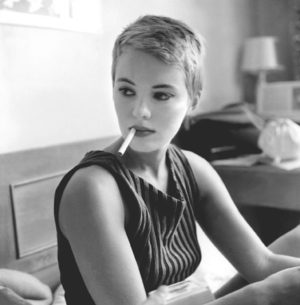

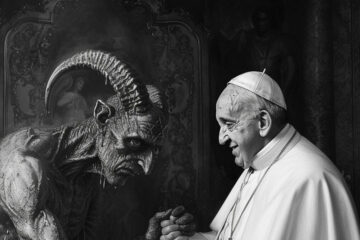

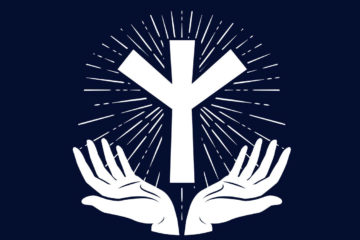
The White conservative is equally sick. In the natural world, it’s healthy and unhealthy.
In the words of Manic Street Preachers:
“White liberal hates slavery
Needs Thai labour to clean his home!”
If you grow up in the Utopia you’ll be disabused of the notion that all races are the same. Luckily, I grew up lower middle class and had no buffer from Mexican and black kids. Ironically though, I don’t have a problem with Mexicans – and I mean that in the most racist way possible. I got to know that fistfights are how you build up respect and situational awareness. You aren’t fighting one, you’re fighting five, chivalry will get you hurt or killed. And no matter how good of friends you think you are, you’re still a guero to them. White liberals are the result of being sheltered from the very diversity they so vociferously champion. In the tragic case of Jean Seberg she made the tragic mistake of… Read more »
Brendan: White liberals are the result of being sheltered from the very diversity they so vociferously champion… — I like William Pierce’s simple definition of liberalism as “a disease of the brain.” The conclusions of the author of this piece, whoever he is, are accurate, but we won’t know who he is because the link to the source of the eight-year-old article, Eternal Forms, is now dead. What a tragic story about the actress who had so much promise who preferred the company of Jews and Negroes to her own people. Why? Perhaps it has something to do with her having to attend Lutheran Sunday school as a small child and having her head packed with a ridiculous lie that “she was a born-sinner” and feeling she had to make… Read more »